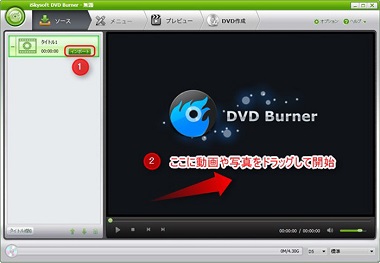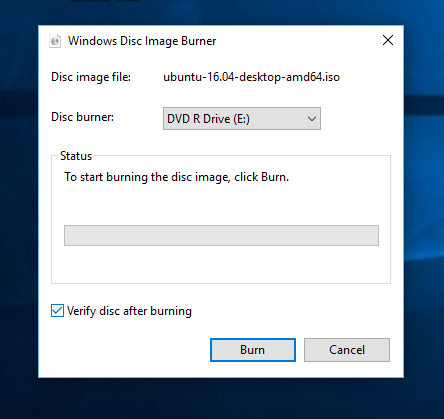Index Of Parent Directory Windows Iso Burner
Select an image Ubuntu is distributed on two types of images described below. Desktop image The desktop image allows you to try Ubuntu without changing your computer at all, and at your option to install it permanently later. This type of image is what most people will want to use. You will need at least 384MiB of RAM to install from this image. There are two images available, each for a different type of computer: Choose this if you have a computer based on the AMD64 or EM64T architecture (e.g., Athlon64, Opteron, EM64T Xeon, Core 2). If you have a non-64-bit processor made by AMD, or if you need full support for 32-bit code, use the i386 images instead.

It also allows you to: - change parent directory. Can play ISO disc images directly. Inde - parent directory index of - parent directory index o.

- This directory contains the most frequently downloaded Ubuntu images. If you need help burning these images. Last modified Size Description; Parent Directory.
- ISO-chooser.exe 395.0 KB 2015-Jan-01 prompts 'Play or Write' when an ISO file is clicked. Configured via INI file iTunes64Setup.exe 256.9 MB 2018-Dec-12 Apple iTunes, for 64-bit versions of Windows iTunesSetup.exe 194.7 MB 2018-Dec-12 Apple iTunes, for 32-bit versions of Windows iTunes_Latest_Version.html.
Fireproof 2008 torrent download. Choose this if you are at all unsure. For almost all PCs.
This includes most machines with Intel/AMD/etc type processors and almost all computers that run Microsoft Windows, as well as newer Apple Macintosh systems based on Intel processors. Server install image The server install image allows you to install Ubuntu permanently on a computer for use as a server.
It will not install a graphical user interface. There are two images available, each for a different type of computer: Choose this if you have a computer based on the AMD64 or EM64T architecture (e.g., Athlon64, Opteron, EM64T Xeon, Core 2). If you have a non-64-bit processor made by AMD, or if you need full support for 32-bit code, use the i386 images instead.
Choose this if you are at all unsure. For almost all PCs. This includes most machines with Intel/AMD/etc type processors and almost all computers that run Microsoft Windows, as well as newer Apple Macintosh systems based on Intel processors. A full list of available files, including files, can be found below. If you need help burning these images to disk, see the.
How to Download Official Windows 10 ISO file from Microsoft If you need to install or reinstall Windows 10, you can use the Media Creation Tool from Microsoft to download a Windows 10 ISO file that you can use to create your own installation media using either a. This tool provides the best download experience for customers running Windows 7, 8.1 and 10. This tutorial will show you how to download an official Windows 10 ISO file from Microsoft directly or by using the Media Creation Tool.
You must be signed in as an administrator to be able to run the Media Creation Tool. If you would like to download a 90-day evaluation of Windows 10 Enterprise, then:. Windows 10 Enterprise ISO download:. Windows 10 Enterprise FAQs:. See also:.
Select the Language, Edition, and, or both (32-bit and 64-bit in same ISO) Architecture you want for the ISO file, and click/tap on Next. (see screenshot below) The Windows 10 option includes both the Home and Pro editions. The product key you enter during installation (Windows Setup) is what determines which edition gets installed. If you select both for the Architecture, you will need to use at least an 8 GB USB flash drive if creating with the ISO.
Your or determines if Home or Pro gets installed during Windows Setup. If you skip entering a product key during Windows Setup, then you will be prompted to select to install the Home or Pro edition. Computer Type: Laptop System Manufacturer/Model Number: TOSHIBA Satellite A660 PSAW3A-0MR00R OS: WIN. 10 Home 10586.104 CPU: Intel Core i7 Q 740 1.73 gigahertz Motherboard: TOSHIBA NWQAA 1.00 Memory: 8124 Megabytes Usable Installed Memory Slot 'DIMM0' has 4096 MB /Slot 'DIMM2 ' has 4096 MB Graphics Card: NVIDIA GeForce GT 330M Monitor(s) Displays: HP W2072a (19.9'vis) Screen Resolution: 1600x1024 Hard Drives: TOSHIBA MK6465GSX (640.13 GB) Internet Speed: 3Mb Browser: Torch Antivirus: Iobit maleware V4/Malwarebytes pro. Computer Type: PC/Desktop System Manufacturer/Model Number: Home Build OS: Windows 10 Pro 1803 64 bit CPU: AMD A10-7870K APU OC 4400Mhz Motherboard: ASUS A88X-PRO Memory: Crucial 16GB DDR3 - 1866 Graphics Card: AMD A10-7870X Radeon R7 APU Sound Card: Motherboard Monitor(s) Displays: ASUS VS278Q-P 27' 1ms DisplayPort Screen Resolution: 1920 X 1080 Keyboard: Logitech G610 Cherry Red Keys Mouse: Logitech Trackman Marble PSU: Seasonic X-650 80 Plus GOLD Case: Corsair Carbide 400R Cooling: Antec Kuhler h2o 620 Water Cooled Hard Drives: Samsung SSD 850 Pro. 256GB 2 WD Black 1TB Internet Speed: 1000Mbps AT&T Fiber Browser: Vivaldi Antivirus: Norton Security Premium v22.14.0.54.
The upgrade files downloaded very fast, pretty much at my 50 Mb/s rate. The upgrade is presently installing on my Windows 7 main boot partition on my Dell XPS 8100. Edit: Its installed and working. It took about 2 hours including finding this tutorial and getting organized.
The actual update was just over an hour. Installed programs are working although I haven't checked them all.
If Office works is suspect everything else will too. All my shortcut icons are flashing every few minutes, perhaps it will settle down later. There is disk and CPU activity so its doing some housekeeping.
Windows Iso Burner Windows 7
Since the is an update from Win 7 there is no MS account login, I'll change that later.